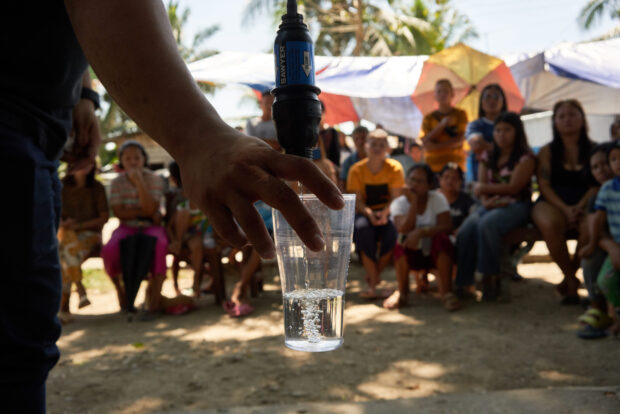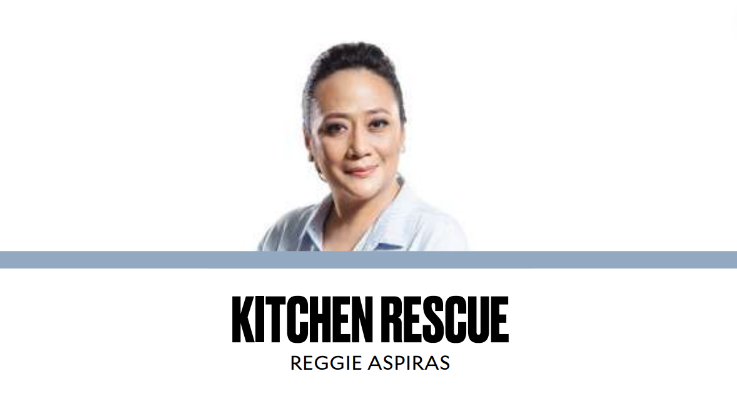“Rid traffic forever,” headlined the ad in our Alabang community weekly newspaper.
It was a call for potential “angel investors” to attend a briefing on a proposed TRAD (Traffic Reduction and Deterrence) system to finally solve traffic problems in the country. The ad claimed that no scheme, device or app exists today that can get rid of traffic, and that TRAD has no competition anywhere in the world.
Promising more than 20 kilometers per hour vehicle speed on any road, the ad also stated that TRAD has a pending patent with the US Patent and Trademark Office (USPTO).
The ad aroused my interest, and I decided to attend the briefing. Upon arrival, I was enthusiastically met by the project’s proponent and moving spirit, lawyer Leandro Verceles Jr., whom I learned was a former governor and congressman from Catanduanes province.
This youthful-looking and energetic ex-politician had impressive academic and business credentials, including “Ten Most Outstanding Filipinos of the Internet Today” (Web Philippines Magazine, 1999), and principal author of the Philippine E-Commerce Act.
He was a BSBA and MPA (masters in public administration) graduate of the University of the Philippines, earned his law degree from the Ateneo Law School, and attended Harvard’s continuing education on e-government and e-governance.
He began his presentation by citing a study which showed that Metro Manila had the highest traffic congestion index in the Asean region. International navigational app Waze ranks our metropolis the worst in the world. And according to a Jica (Japan International Cooperation Agency) study, the opportunity losses to our country’s economy are estimated at P3.5 billion a day. Very conservatively, this adds up to over P1 trillion a year, equivalent to almost one-third of the 2019 Philippine national budget of P3.66 trillion!
Traffic solutions, like the current number coding, have failed because of the steady increase in cars plying finite roads. Also, many buy two or more cars to avoid the coding.
Other solutions, like congestion pricing, similar to that in Singapore, London, Stockholm and New York, have been considered, but have been criticized for inequality, favoring the rich who can afford to pay for using roads.
Traffic as economic problem
TRAD, Verceles’ proposed solution, is based on the following premises:
First, traffic congestion is not an engineering or transport issue, but an economic problem. Giving it away for free causes a shortage. For instance, if a restaurant gives away its food for free, people will flock to it, causing congestion until the food runs out.
Second, traffic cannot be solved by building more roads alone (supply). Vehicle use of existing roads (demand) must also be regulated, balancing it continuously with the available supply. As renowned urban planner Lewis Mumford once said, “Building more roads to prevent congestion is like a fat guy loosening his belt to prevent obesity.”
This is where TRAD enters the picture. It is an app, to be available on any smartphone, and based on “time sharing” of road usage to ensure that the maximum vehicle volume efficiency threshold is never exceeded even during rush hour.
Its main advantages are:
It will be free to the public through mobile phones using the facilities of the existing telecom companies.
Its administrative tools will also be made available to the MMDA and local governments at no cost.
No CCTV or RFID infrastructure will be required.
It will be based on differential pricing, which is flexible as opposed to the classical congestion pricing which is fixed and gives unfair advantage to the rich. Differential pricing charges are adjusted based on real-time demand and supply factors.
It will do away with fixed coding, and instead will optimize on variable coding—good news for motorists.
Most importantly, Verceles assured that TRAD would guarantee traffic flow greater than 20 kph on any road at any time of day, especially during rush hour. As an example, he pointed out that on Edsa, the maximum threshold is 268,000 thousand vehicles per day. At present, it is actually 420,000 per day, ballooning to 450,000 during the Christmas season.
He added that no amount of traffic discipline, rational use of bus lanes, improvement of the MRT, and other measures will solve Edsa’s traffic problem.
But he claimed that TRAD can reduce vehicle volume by 20 percent, enough to ease traffic.
One-month trial
Verceles is confident that TRAD can relieve traffic congestion in the Philippines.
He expects some initial resistance, but all he’s asking for is a one-month trial in a congested major road in one municipality or city for the system to prove itself.
How realistic is it? In my view, it is more than worth a try, since, in the first place, it’s free.
Verceles seems to have done his homework, combing through every aspect of his proposed scheme for the last three years. Given a chance by at least one local government unit, he is confident of its success.
Traffic congestion in the major cities, especially on Edsa, has made the daily lives of millions of Filipinos miserable. More than a lifestyle issue, it is a life issue affecting health, productivity, time with family, finances, and much more.
It is an urgent issue to which the government must give the highest priority. The concerned government officials should, at the very least, listen to innovators like Verceles Jr. who come forward with proposals for solving the problem.
Tel. 0927-4377920












































